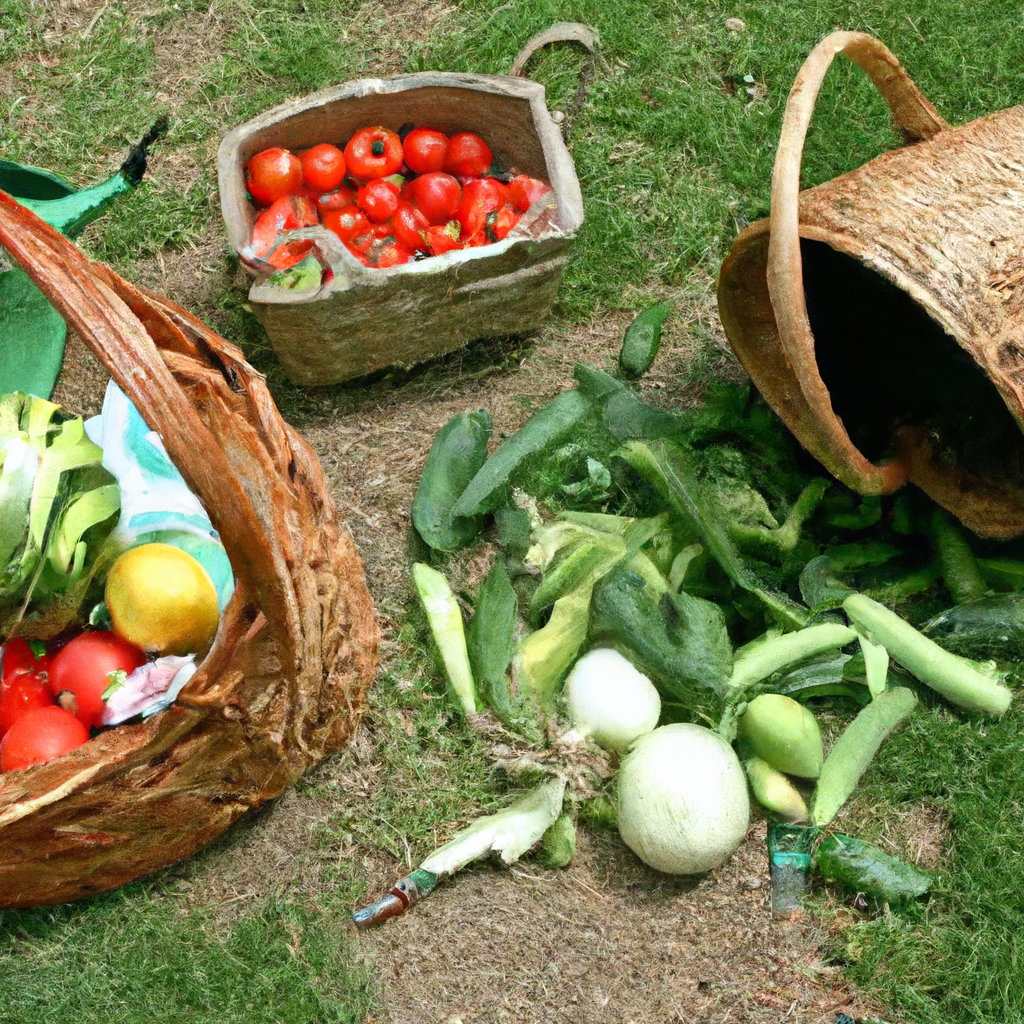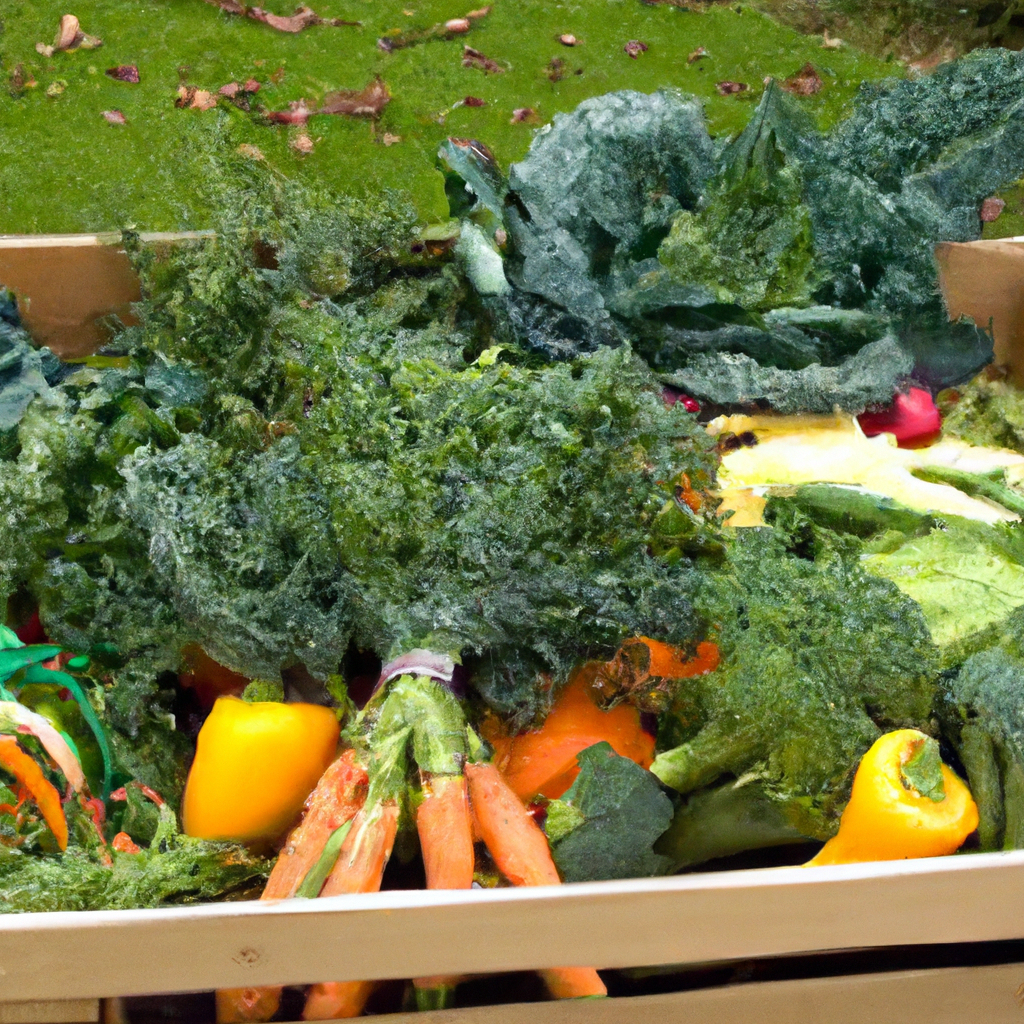
Urban farming has emerged as a sustainable solution for tackling the pressing issue of food waste in urban areas. With the exponential growth of cities and the increasing demand for fresh produce, traditional agriculture is facing challenges like transportation costs and longer storage times, leading to a significant amount of produce going to waste. Urban farming, on the other hand, combines innovative techniques such as vertical farming and rooftop gardens, bringing food production closer to consumers and minimizing wastage. In this article, we will explore the benefits and potential of urban farming in reducing food waste and creating a more sustainable future.

Benefits of Urban Farming
Urban farming offers numerous benefits, including minimizing food waste, increasing food accessibility, and promoting sustainability. By incorporating farming practices within urban areas, communities can contribute to a more sustainable and efficient food system.
Minimizing Food Waste
One of the most notable benefits of urban farming is its ability to minimize food waste. Traditional agricultural systems often experience significant losses due to transportation, storage, and spoilage. However, with urban farming, food can be grown and consumed within the same area, reducing the need for transportation and minimizing the chances of spoilage. By cultivating crops in close proximity to consumers, urban farmers can ensure that fresh produce is readily available, minimizing wastage.
Increasing Food Accessibility
Urban farming helps increase food accessibility, particularly in areas that lack access to fresh and affordable produce. By establishing urban farms in food deserts or low-income communities, residents can have easy access to nutritious food. This directly addresses issues of food insecurity and promotes healthy eating habits. Additionally, urban farming can provide educational opportunities for individuals to learn about agriculture and be more self-sufficient in growing their own food, further promoting food accessibility.
Promoting Sustainability
Urban farming promotes sustainability by reducing the environmental impact associated with traditional agricultural practices. With urban farming techniques, farmers can utilize limited resources more efficiently, such as water and land. By employing sustainable farming methods like composting, crop rotation, and precision farming, urban farmers can optimize resource use, minimize waste, and protect the ecosystem. The cultivation of food in urban areas also reduces the carbon footprint associated with transportation, as produce is grown closer to the consumers.
Techniques for Reducing Food Waste
To further reduce food waste in urban farming, several effective techniques can be employed.
Composting
Composting is a valuable technique that helps convert food waste into nutrient-rich compost, which can be used to replenish the soil and support plant growth. By composting organic waste produced within urban farms or even in nearby communities, farmers can recycle nutrients and close the nutrient cycle. This not only reduces food waste but also enhances soil fertility, resulting in healthier crops.
Crop Rotation
Crop rotation is an essential practice in sustainable agriculture, including urban farming. By rotating crops in different plots, farmers can prevent soil depletion and the buildup of pests or diseases. Crop rotation helps maintain soil health, improve overall yield, and minimize the risk of crop failure. This technique also reduces the reliance on chemical pesticides and fertilizers, promoting a more environmentally friendly farming approach.
Precision Farming
Precision farming involves the use of technology to optimize farming practices, minimizing waste and maximizing output. Through the use of sensors, drones, and data analytics, urban farmers can monitor crop health, soil conditions, and irrigation needs in real-time. This enables precise application of resources, such as water and fertilizers, in specific areas, reducing wastage and improving overall efficiency. Precision farming also allows for early detection of pests or diseases, enabling prompt intervention and minimizing crop loss.

Optimizing Space in Urban Farming
Given the limited space in urban areas, it is crucial to optimize land usage for urban farming. Several techniques facilitate this optimization.
Vertical Farming
Vertical farming involves growing plants in vertically stacked layers, utilizing vertical space to maximize crop production. By using techniques such as hydroponics or aeroponics, crops can be grown without soil, further reducing space requirements. Vertical farming allows for year-round production and can be implemented in buildings or even small urban spaces, making it an ideal solution for densely populated areas.
Container Gardening
Container gardening involves growing plants in containers, such as pots or raised beds. This technique is particularly suitable for urban farming as it allows for flexibility and easy movement of plants if necessary. Container gardening enables the cultivation of various types of plants, including vegetables, herbs, and flowers, in small spaces like balconies or rooftops. It is a convenient way to utilize any available space for growing fresh produce.
Rooftop Gardens
Rooftop gardens transform unused rooftops of buildings into productive green spaces. By leveraging the otherwise unused area, urban farmers can cultivate crops or create gardens that benefit the community. Rooftop gardens provide insulation, reduce stormwater runoff, improve air quality, and even contribute to urban heat island mitigation. Additionally, rooftop gardens can be integrated with rainwater harvesting systems, helping to conserve water resources and make urban farming more sustainable.
Community Engagement in Urban Farming
Community engagement plays a vital role in the success and sustainability of urban farming initiatives.
Educational Programs
Implementing educational programs is an effective way to engage the community in urban farming. These programs can include workshops, seminars, or even school curriculums that educate individuals about sustainable farming practices, nutrition, and the importance of locally grown food. By providing knowledge and practical skills, educational programs empower community members to actively participate in urban farming and develop a deeper understanding of the food system.
Community Gardens
Community gardens are shared plots of land where individuals or groups can grow their own food collectively. These gardens foster a sense of community, provide access to fresh produce, and promote healthy lifestyles. Community gardens also serve as spaces for social interaction, where individuals can exchange knowledge, resources, and experiences related to gardening. By actively involving the community in the cultivation process, community gardens strengthen the bond between individuals and the food they consume.
Farmers’ Markets
Farmers’ markets serve as crucial platforms for connecting urban farmers with the community. These markets provide direct access to fresh, locally grown produce, allowing urban farmers to sell their crops directly to consumers. By encouraging consumers to support local farmers, farmers’ markets stimulate the local economy and foster a sense of community. Additionally, these markets often offer educational events, cooking demonstrations, and other activities that promote sustainable food practices, making them valuable community hubs.

Utilizing Technology in Urban Farming
Technology plays a significant role in enhancing the efficiency and productivity of urban farming.
Smart Farming Apps
Smart farming apps enable farmers to monitor and manage various aspects of their urban farms using smartphones or other smart devices. These apps provide real-time data on factors such as soil moisture, temperature, and nutrient levels, allowing farmers to make informed decisions and optimize resource allocation. Smart farming apps also offer pest and disease identification tools, weather forecasts, and reminders for optimal planting and harvesting times. By utilizing these apps, urban farmers can streamline their operations and maximize their yields.
Automated Systems
Automated systems, such as irrigation systems and robotic harvesters, help reduce labor requirements and optimize resource usage in urban farming. Automated irrigation systems can be programmed to supply the right amount of water at appropriate intervals, ensuring plants receive optimal hydration without waste. Robotic harvesters can efficiently and accurately harvest crops, minimizing losses and reducing the need for manual labor. These automated systems streamline farming processes, improve productivity, and contribute to more sustainable urban farming practices.
Sensor Technologies
Sensor technologies, including soil moisture sensors, pH sensors, and climate sensors, aid in monitoring and managing the growing conditions of urban farms. These sensors provide real-time data on critical parameters, allowing farmers to adjust irrigation, nutrient application, and environmental control systems accordingly. By ensuring optimal growing conditions, sensor technologies help improve crop quality, minimize waste, and maximize yield potential. With advancements in sensor technologies, urban farmers can optimize resource use and create more sustainable and efficient growing environments.
Challenges and Solutions in Urban Farming
While urban farming offers numerous benefits, it also faces certain challenges that need to be addressed for widespread adoption and success.
Lack of Space
Limited space in urban areas poses a significant challenge to urban farming. However, techniques such as vertical farming, container gardening, and rooftop gardens provide innovative solutions to mitigate this challenge. By utilizing vertical space, repurposing containers, and transforming rooftops into productive gardens, urban farmers can maximize their growing capacity within limited areas. Additionally, community gardens and rooftop farms can be established in unused or underutilized spaces, further optimizing land usage.
Limited Resources
Urban farming often faces resource limitations, such as access to water, fertile soil, and suitable climate conditions. However, techniques like precision farming, hydroponics, and soilless cultivation offer resource-efficient alternatives. Precision farming allows for precise resource allocation, minimizing waste and maximizing efficiency. Hydroponics and soilless cultivation eliminate the need for fertile soil, enabling year-round production in controlled environments. By adopting these techniques, urban farmers can overcome resource limitations and create sustainable food systems.
Policy and Regulation Support
Policy and regulation support is crucial for the growth and success of urban farming. Many urban farming initiatives face challenges related to zoning regulations, land use restrictions, and access to funding. To overcome these barriers, governments and policymakers must develop supportive policies that facilitate urban farming. Zoning incentives, such as allowing agricultural land use within urban areas, can encourage the establishment of urban farms. Investment incentives, subsidies, and grants can provide financial support to aspiring urban farmers. Additionally, the provision of resources, such as access to affordable land and infrastructure, can further promote the expansion of urban farming initiatives.

Successful Urban Farming Case Studies
Several successful urban farming case studies showcase the potential and benefits of integrating agriculture within urban environments.
Brooklyn Grange
Brooklyn Grange, located in New York City, is the world’s largest rooftop soil farm. Spanning over 2.5 acres, it produces over 50,000 pounds of organically grown produce annually. By utilizing unused rooftop spaces, Brooklyn Grange promotes local food production, increases food accessibility, and educates the community about sustainable farming practices. The farm also hosts events, farmers’ markets, and educational programs, actively engaging the surrounding community.
Chicago’s Growing Power
Growing Power, based in Chicago, is a non-profit organization dedicated to urban farming and sustainable food systems. With its flagship farm in the city, Growing Power focuses on providing fresh and organic produce to local communities. The organization utilizes innovative techniques such as aquaponics and vermiculture to maximize productivity within limited urban spaces. Growing Power has also pioneered initiatives to address food security and provide educational opportunities for urban residents.
Singapore’s Sky Greens
Sky Greens, located in Singapore, showcases the successful integration of vertical farming within a highly urbanized environment. Utilizing a patented A-Go-Gro system, Sky Greens produces leafy greens and vegetables year-round in vertical towers. This vertical farming technique allows for efficient land use, optimal resource consumption, and a reduced carbon footprint. Sky Greens’ farms are integrated with a consumer retail concept, allowing residents to purchase fresh produce directly from the farm.
The Economics of Urban Farming
Urban farming has significant economic implications, benefiting both the local community and the broader economy.
Reduced Transportation Costs
By cultivating food within urban areas, the need for long-distance transportation is minimized. This reduction in transportation costs creates economic savings for both urban farmers and consumers. Additionally, reduced transportation distances result in decreased carbon emissions, contributing to environmental sustainability and overall cost efficiency.
Job Creation
Urban farming creates employment opportunities, particularly in areas with high unemployment rates or limited job prospects. From farm workers to market vendors and educational program coordinators, urban farming initiatives require a diverse range of skills. By generating jobs locally, urban farming contributes to economic growth, poverty reduction, and community development.
Local Economic Growth
Urban farming can stimulate local economies by supporting small businesses and promoting entrepreneurship. Farmers’ markets, community-supported agriculture programs, and farm-to-table restaurants all contribute to the local economy by creating market opportunities for local farmers and producers. The circulation of money within the community further strengthens the local economy and contributes to sustainable economic growth.

Policy Recommendations for Urban Farming
To encourage the growth of urban farming and realize its full potential, several policy recommendations can be considered.
Zoning Incentives
Governments should provide zoning incentives that facilitate the establishment of urban farms. This can include zoning regulations that allow agricultural land use within urban areas or the creation of specific zones dedicated to urban farming. By designating areas suitable for agriculture and relaxing zoning restrictions, urban farmers can access affordable land and establish farms closer to their markets.
Investment Incentives
Providing financial incentives, subsidies, and grants can help support urban farming initiatives. Governments can offer tax breaks or low-interest loans to aspiring urban farmers to assist with startup costs, infrastructure development, and working capital. These financial incentives incentivize entrepreneurship, encourage investment in urban farming, and support the development of sustainable food systems.
Provision of Resources
Governments should ensure that urban farmers have access to essential resources, such as water, infrastructure, and technical support. This can involve the installation of irrigation systems, water conservation initiatives, and the provision of training programs or extension services. By supporting urban farmers with necessary resources, policymakers can enhance the viability and resilience of urban farming initiatives.
Conclusion
Urban farming presents a sustainable solution for reducing food waste, increasing food accessibility, and promoting sustainability. By adopting techniques such as composting, precision farming, and vertical farming, urban farmers can optimize space, reduce resource use, and minimize waste. Engaging the community through educational programs, community gardens, and farmers’ markets creates a sense of food security and strengthens the bond between individuals and the food they consume. Utilizing technology and addressing challenges such as limited space, resources, and policy support further enhance the potential of urban farming. Successful case studies demonstrate the feasibility and benefits of urban farming, while the economics of urban farming highlight its positive impact on job creation and local economic growth. To fully realize the potential of urban farming, policy recommendations, such as zoning incentives, investment incentives, and the provision of resources, are crucial. By achieving sustainable food systems through urban farming, we can ensure a more resilient, equitable, and environmentally conscious future.







